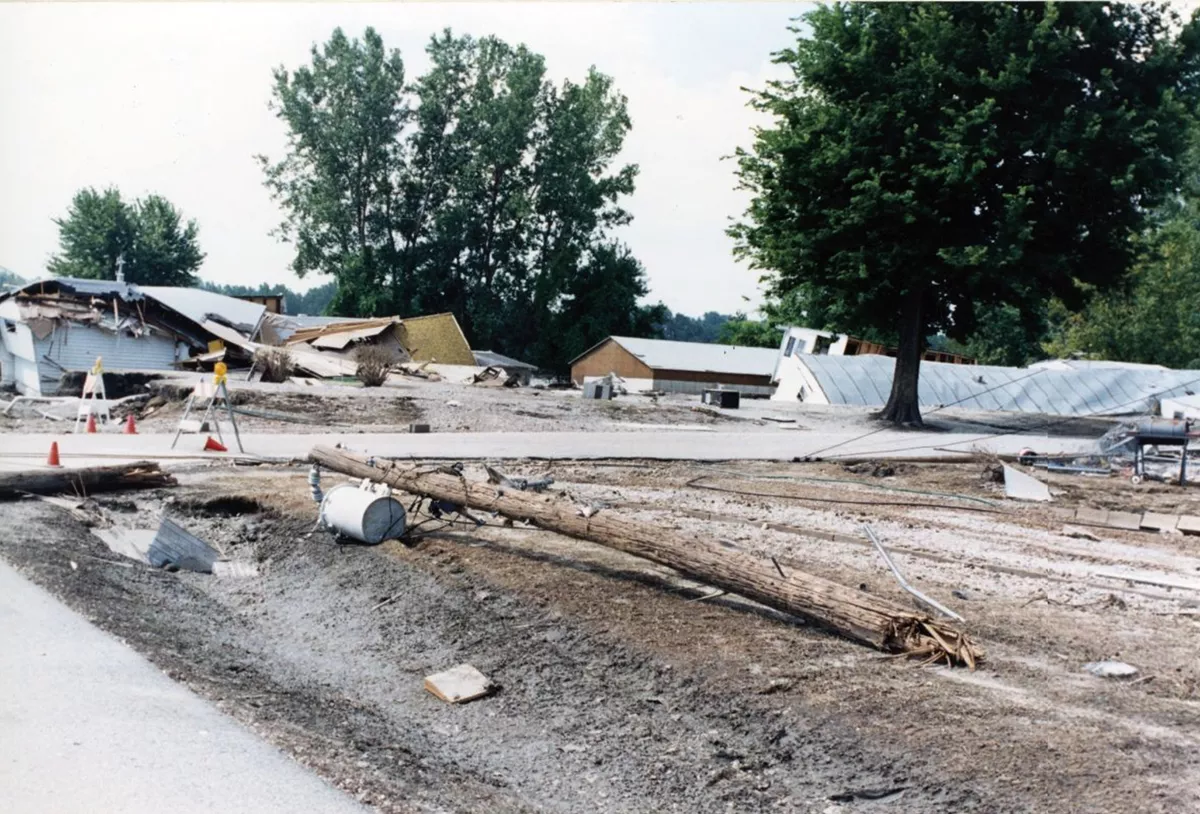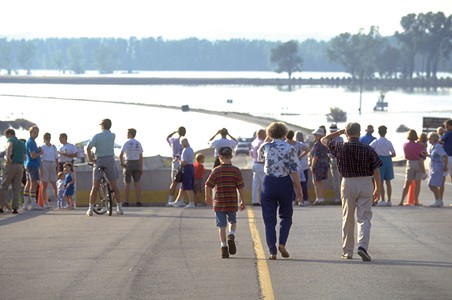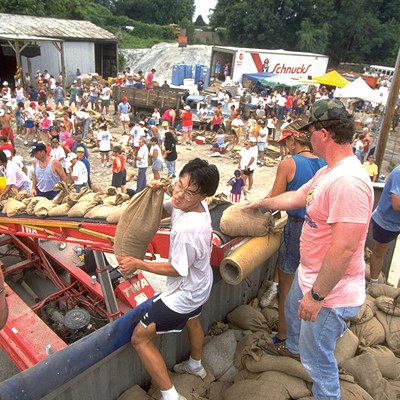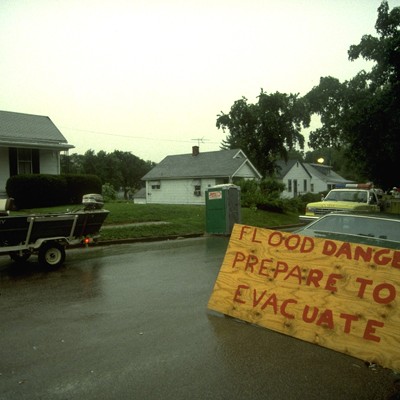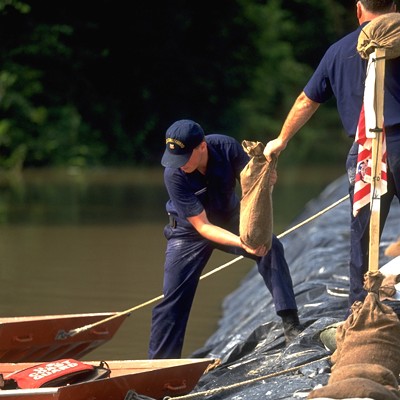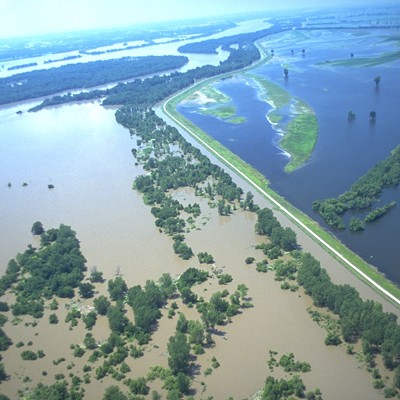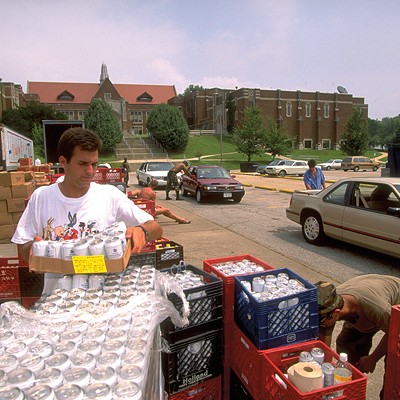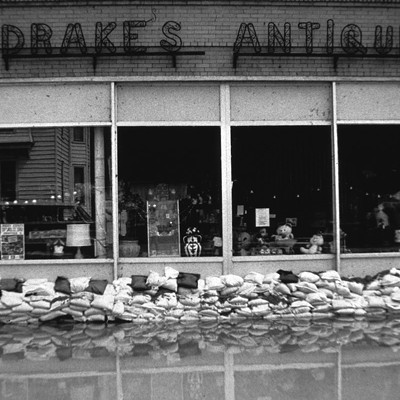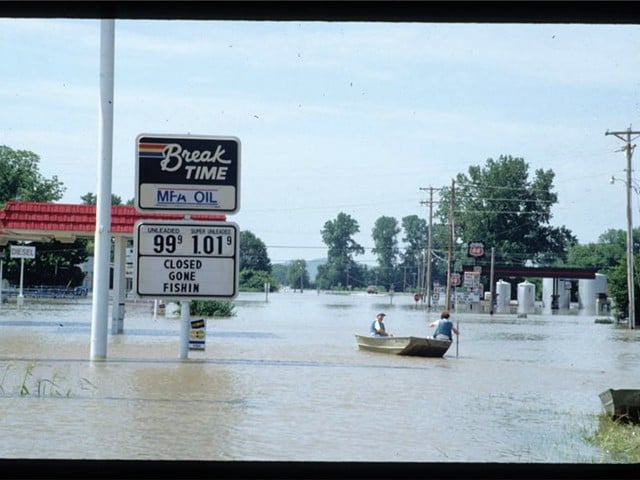Rev. Larry Rice Recalls Helping People Who Lost Housing in the 1993 Flood
When the water flooded Missouri, the St. Louis televangelist offered free land, telethons and more
When the floods initially hit St. Louis, Reverend Larry Rice was in Russia with his daughters.
“We were helping orphans,” he says. It was early July, and the flooding in St. Louis was so bad it made the world news.
“You really started noticing it on July 3 when it broke through the levee in Wentzville, Missouri,” he says. “And as days passed things kept getting worse.”
Rice is director of the New Life Evangelistic Center, which offers resources for the unhoused, including job training. The city shuttered his shelter in Downtown West in 2017, though he still has a center in Overland and a farm and training center in New Bloomfield, Missouri, as well as other locations. At the time of the flood, his nonprofit also owned the TV stations KNLC (channel 24) and KLNJ (channel 25), which broadcast shows such as Bonanza, Focus on Faith and shows featuring Rice himself.
Rice was known for his made-for-the-media activism (to believers) or stunts (to the cynical). He once took a group of people into the then-abandoned City Hospital as part of a demonstration to persuade the city to let him turn it into a shelter. He and his 10-year-old son slept outside on cardboard. He put up crosses on the lawn of City Hall and the state Capitol to draw attention to unhoused people, according to the St. Louis Post-Dispatch.
The flood was making thousands more people in Missouri homeless, so Rice sprang into action.
He remembers one woman who fled her house with just a few necessities, including a large-print Bible and a photo of her mother. “After the flood swallowed her home, she felt totally lost,” Rice says. “The days that followed were some of the loneliest she ever had.”
To help, he used his TV channels. “We’d go on the air, and we’d try to raise money for flood victims. We’d try to provide rent- and housing-assistance grants to flood-victim families. A lot of people were staying with relatives or friends or at a hotel. They were trying to survive at their own expense. You know, the river stayed above flood stage for 147 days,” he says. “We made available to flood victims free vacation tickets to Worlds of Fun in Kansas City or the Great Passion Play in Eureka Springs, Arkansas, and different places like that to help them get into a different environment outside this crisis that had dominated their life.”
He remembers some of the worst devastation he saw was in Cedar City, Missouri, outside Jefferson City, where the Missouri River overran its banks and destroyed almost all 120 houses.
“If you go there now, what you’ll find is three or four homes. Everyone else got washed out,” he says. The city is now a park. Rice offered the Cedar City residents and anyone else who had lost their home in the flood land near his property in New Bloomfield, near Jefferson City. His organization had to build a septic system for them and offered one-third acre lots. He told reporters at the time it was an opportunity for “homesteading,” and called the people building “New Cedar City” settlers. He estimates about half a dozen households settled there.
On top of that, Rice was still helping the unhoused and low-income populations he considered his life’s work. He recalls drawing energy from prayer. “Then the adrenaline would kick in,” he says. “We were constantly praying to find a way to provide for the emergency needs and come up with long-term solutions.”
But New Cedar City never became the homestead the televangelist dreamt of. FEMA money soon helped the remaining residents of Cedar City move on, and Rice eventually sold New Cedar City to a developer, who took on the work of expanding the septic system and building the development.
“As the flood waters went down, we saw a big need to help with cleaning supplies,” Rice recalls. “People would go to a shelter for a few days in the beginning, but they really wanted to return home.”
This story is part of a series about the Great Flood of 1993. Read more here.
Subscribe to Riverfront Times newsletters.
Follow us: Apple News | Google News | NewsBreak | Reddit | Instagram | Facebook | Twitter | Or sign up for our RSS Feed

